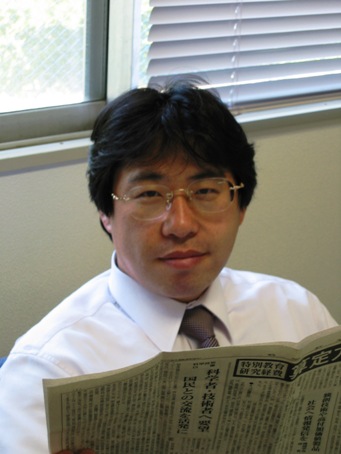Manipulation of single atoms and molecules is an innovative experimental technique of nanoscience. Recently, an atomic force microscopy (AFM) has been used to manipulate single atoms and molecules. Atom manipulation with an AFM is particularly promising, because it allows the direct measurement of the required forces.
In the present study, we investigated the forces in AFM lateral manipulation for a top single Cu atom (super Cu atom) on the Cu(110)-O surface. The AFM tip apex was coated with Cu or O atoms in situ by slightly making a tip-sample mechanical contact on the Cu(110)-O surface prior to the imaging. In the case of O-adsorbed AFM tip [1], the super Cu atom on the surface was pulled at a lateral tip position on the adjacent binding site. In contrast, in the case of Cu-adsorbed AFM tip [1], the super Cu atom was pushed over the top of the super Cu atom. Thus, we found that the forces (attractive or repulsive forces) to move an atom laterally on the surface strongly depend on the atom species of the AFM tip apex and the surface. Furthermore, in order to clarify the manipulation process, we investigated the full tip-sample potential landscape necessary to manipulate atoms. The tip-sample potentials were determined by the frequency shift versus distance curves by mathematical analysis. We found that the tip-sample potentials which move the super Cu atom laterally on the surface strongly depended on the atom species of the AFM tip apex and the surface. These results strongly suggest that the chemical nature of tip-sample interaction plays an important role in lateral atom manipulation. Furthermore, we discuss the pathways for moving the super Cu atom.

Reference
[1] J. Bamidele, Y. Kinoshita, R. Turanský, S. H. Lee, Y. Naitoh, Y. J. Li, Y. Sugawara,
I. Štich, and L. Kantorovich, Phys. Rev. B 86, 155422 (2012).
Speaker:
Institution:
Location:

